Are you planning a trip to Ha Giang and wondering, “Which country does Ha Giang border?” Ha Giang, a breathtaking province in northern Vietnam, shares a border with China. SIXT.VN offers seamless travel experiences, providing everything from airport transfers to curated tours, ensuring your adventure in Vietnam is unforgettable. Discover the captivating landscapes and cultural richness of Ha Giang with ease, relying on our expert guidance.
1. Understanding Ha Giang’s Geography and Strategic Location
Ha Giang province, nestled in the far north of Vietnam, holds significant geographical and strategic importance due to its border with China. Let’s delve into the details of its location and what that means for travelers.
1.1. Where Exactly is Ha Giang?
Ha Giang is the northernmost province of Vietnam, characterized by its dramatic landscapes, including towering mountains, deep valleys, and the iconic Dong Van Karst Plateau Geopark. The province’s unique topography and remote location have historically made it a strategic area.
1.2. Defining the Border: Ha Giang and China
Ha Giang shares a significant border with China’s Yunnan Province. This border stretches approximately 270 kilometers (168 miles) and is marked by natural features such as rivers and mountains. Key border crossings include the Thanh Thuy International Border Gate, facilitating trade and travel between the two countries.
1.3. Why is the Border Significant?
The border between Ha Giang and China has historical, economic, and cultural significance.
- Historical Context: The area has been a site of interaction and, at times, conflict between Vietnam and China for centuries. The mountainous terrain made it a challenging region to control, influencing the cultural mix and traditions of the local ethnic groups.
- Economic Importance: The border facilitates trade, with goods flowing between the two countries through established border gates. Local markets near the border thrive on this exchange, offering a glimpse into the cross-border commerce.
- Cultural Exchange: The proximity to China has influenced the cultural practices of the ethnic minority groups residing in Ha Giang. This is evident in their languages, customs, and traditions, creating a unique cultural tapestry.
1.4. Exploring the Border Area
Travelers interested in exploring the border area can visit several key locations:
- Thanh Thuy International Border Gate: This is the primary crossing point for trade and travel. While crossing the border may require specific permits and is subject to regulations, visiting the area provides insight into the border’s operations.
- Local Markets: Markets near the border, such as those in Dong Van and Meo Vac, offer a vibrant mix of Vietnamese and Chinese goods. These markets are excellent places to experience the local culture and sample regional cuisine.
- Viewpoints: Several viewpoints along the border offer stunning vistas of the mountainous terrain that separates the two countries. These spots are perfect for photography and appreciating the natural beauty of the region.
1.5. Travel Considerations Near the Border
When traveling near the border, keep the following in mind:
- Permits and Regulations: Ensure you have the necessary permits if you plan to cross the border. Regulations can change, so it’s best to check with local authorities or a reputable tour operator like SIXT.VN.
- Respect Local Customs: The border region is home to diverse ethnic groups with unique traditions. Show respect for their customs and practices.
- Stay Informed: Be aware of the local political and social climate. Follow the guidance of your tour guides and local authorities to ensure a safe and respectful visit.
By understanding Ha Giang’s geography and strategic location, you can better appreciate the province’s unique character and plan a more informed and enriching travel experience. SIXT.VN can provide you with the necessary support and information to explore this fascinating region responsibly.
 Ha Giang landscape near the border with China, showcasing the rugged terrain
Ha Giang landscape near the border with China, showcasing the rugged terrain
2. What to Expect When Visiting Border Regions in Ha Giang
Visiting the border regions of Ha Giang offers a unique blend of cultural experiences and stunning landscapes. However, it’s essential to know what to expect to ensure a smooth and respectful trip. Here’s a breakdown of what you’ll encounter:
2.1. Diverse Ethnic Cultures
Ha Giang is home to numerous ethnic minority groups, each with its own distinct traditions, languages, and attire.
- Hmong: One of the largest ethnic groups in Ha Giang, the Hmong are known for their vibrant clothing and intricate silver jewelry.
- Tay: The Tay people are known for their traditional stilt houses and agricultural practices.
- Dao: The Dao are famous for their distinctive red headscarves and herbal medicine knowledge.
- Lo Lo: The Lo Lo people have unique bronze drums and traditional festivals.
When visiting these communities, it’s crucial to be respectful:
- Dress Modestly: Especially when visiting religious sites or attending local ceremonies.
- Ask Before Photographing: Always seek permission before taking pictures of people, especially elders.
- Learn Basic Phrases: Knowing a few basic phrases in the local language can go a long way in showing respect and fostering connection.
SIXT.VN can help arrange guided tours that promote responsible and respectful interactions with these communities.
2.2. Stunning Landscapes
The border regions of Ha Giang are characterized by dramatic, untouched landscapes:
- Dong Van Karst Plateau Geopark: A UNESCO World Heritage site, featuring towering limestone karsts, deep canyons, and panoramic viewpoints.
- Ma Pi Leng Pass: Known as one of the most dangerous and beautiful roads in Vietnam, offering breathtaking views of the surrounding mountains and valleys.
- Terraced Rice Fields: The region’s terraced rice fields cascade down the hillsides, creating a stunning visual display, especially during the planting and harvest seasons.
2.3. Local Markets and Trade
The border region is a hub for local trade, with vibrant markets offering a mix of Vietnamese and Chinese goods:
- Dong Van Market: A bustling market where you can find traditional textiles, handicrafts, and local produce.
- Meo Vac Market: Another significant market where ethnic groups from surrounding villages come to trade.
When visiting these markets:
- Bargain Respectfully: Bargaining is common, but always do so with a smile and respect the vendor’s final price.
- Try Local Cuisine: Sample regional dishes like thang co (horse meat soup) and men men (steamed corn flour).
- Support Local Artisans: Purchase handicrafts and textiles directly from the artisans to support their livelihoods.
2.4. Infrastructure and Accessibility
The infrastructure in Ha Giang’s border regions can be challenging:
- Road Conditions: Roads can be narrow, winding, and sometimes poorly maintained.
- Accommodation: Options range from basic homestays to more comfortable guesthouses.
- Facilities: Expect limited access to ATMs, reliable Wi-Fi, and modern amenities in remote areas.
SIXT.VN can help you navigate these challenges by providing:
- Reliable Transportation: Including well-maintained vehicles and experienced drivers.
- Curated Accommodation: Selecting comfortable and safe lodging options.
- Essential Information: Providing up-to-date information on road conditions, local facilities, and travel tips.
2.5. Security and Regulations
The border region is subject to certain regulations:
- Permits: Certain areas may require special permits, especially if you plan to cross the border.
- Restricted Areas: Be aware of any restricted areas and follow the guidance of local authorities.
- Safety: While generally safe, it’s wise to be cautious and aware of your surroundings, especially in crowded markets.
SIXT.VN ensures that all tours comply with local regulations and provides guidance on safety and security.
By understanding these aspects of visiting Ha Giang’s border regions, you can prepare for an enriching and responsible travel experience. SIXT.VN is committed to providing you with the support and resources you need to explore this unique part of Vietnam.
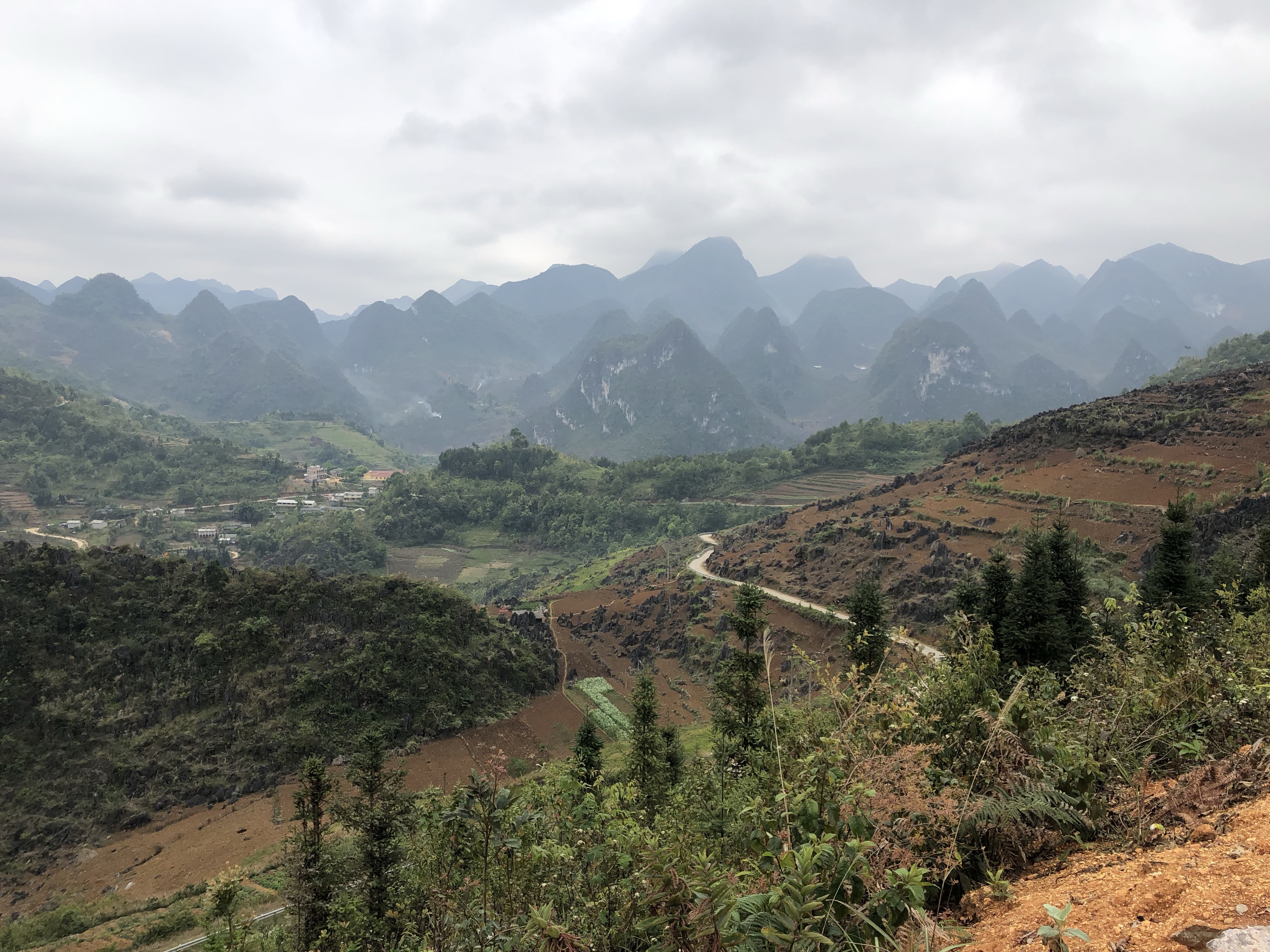 Local market in Ha Giang near the Chinese border, showcasing traditional trade and cultural exchange
Local market in Ha Giang near the Chinese border, showcasing traditional trade and cultural exchange
3. Planning Your Trip: Essential Tips for Visiting Ha Giang
Planning a trip to Ha Giang requires careful consideration due to its remote location and unique travel conditions. Here are essential tips to help you prepare for an unforgettable adventure.
3.1. Best Time to Visit
The best time to visit Ha Giang depends on your preferences and what you want to experience:
- September to November: This is the dry season with pleasant temperatures, ideal for trekking and outdoor activities. The terraced rice fields are often golden during this period, creating stunning landscapes.
- March to May: Another favorable time with mild weather and blooming flowers. It’s a great time for photography and enjoying the natural beauty of the region.
- December to February: The weather can be cold, especially in the mountains, but you’ll witness unique cultural events and festivals. Be prepared for occasional snowfall.
Avoid the rainy season from June to August, as landslides and floods can disrupt travel plans.
3.2. Visa and Entry Requirements
Ensure you have the necessary visa and entry requirements for Vietnam:
- Visa: Most nationalities require a visa to enter Vietnam. Check the latest visa regulations based on your citizenship.
- Passport: Your passport should be valid for at least six months beyond your planned stay.
- Entry Regulations: Stay informed about any specific entry regulations or health requirements.
SIXT.VN can provide up-to-date information and assist with visa application processes.
3.3. Transportation Options
Getting around Ha Giang can be an adventure in itself:
- Motorbike: The most popular way to explore Ha Giang, offering flexibility and the chance to experience the landscapes up close. Ensure you have a valid license and travel insurance.
- Car or Private Transfer: A more comfortable option, especially for families or those who prefer not to ride a motorbike. SIXT.VN offers private car services with experienced drivers.
- Bus: Local buses are available but can be crowded and infrequent.
SIXT.VN provides reliable transportation options, including motorbike rentals and private car services, tailored to your needs and preferences.
3.4. Accommodation Choices
Accommodation in Ha Giang ranges from basic homestays to comfortable hotels:
- Homestays: A great way to experience local culture and hospitality. Expect simple but clean accommodations.
- Guesthouses: More comfortable options with private rooms and amenities.
- Hotels: Limited options in larger towns like Ha Giang City and Dong Van, offering modern facilities.
SIXT.VN curates a selection of accommodations to ensure your comfort and safety, from authentic homestays to well-appointed hotels.
3.5. What to Pack
Packing appropriately is crucial for a comfortable trip:
- Clothing: Pack layers, including warm clothes for the evenings and cooler months.
- Footwear: Sturdy hiking shoes are essential for trekking and exploring.
- Rain Gear: A waterproof jacket and pants are recommended, especially during the rainy season.
- Personal Items: Bring insect repellent, sunscreen, a hat, and any necessary medications.
3.6. Health and Safety
Take necessary precautions to protect your health and safety:
- Travel Insurance: Ensure you have comprehensive travel insurance that covers medical emergencies and evacuation.
- Vaccinations: Consult your doctor about recommended vaccinations for Vietnam.
- Food and Water: Drink bottled water and be cautious about eating street food.
- Altitude Sickness: If you plan to trek at high altitudes, acclimatize gradually and stay hydrated.
3.7. Cultural Sensitivity
Respect local customs and traditions:
- Dress Modestly: Especially when visiting religious sites.
- Ask Permission: Before taking photos of people.
- Learn Basic Phrases: Knowing a few words in Vietnamese can enhance your interactions with locals.
SIXT.VN provides cultural sensitivity training for guides and ensures that tours are conducted responsibly and respectfully.
3.8. Budgeting
Plan your budget carefully:
- Accommodation: Prices range from $10 USD per night for a homestay to $50 USD or more for a hotel.
- Transportation: Motorbike rentals cost around $10-15 USD per day, while private cars are more expensive.
- Food: Local food is affordable, with meals costing around $2-5 USD.
- Activities: Budget for entrance fees, guided tours, and cultural experiences.
SIXT.VN offers transparent pricing and customizable tour packages to help you manage your budget effectively.
By following these essential tips, you can plan a safe, enjoyable, and enriching trip to Ha Giang. SIXT.VN is here to assist you with every aspect of your travel arrangements, ensuring a seamless and unforgettable experience.
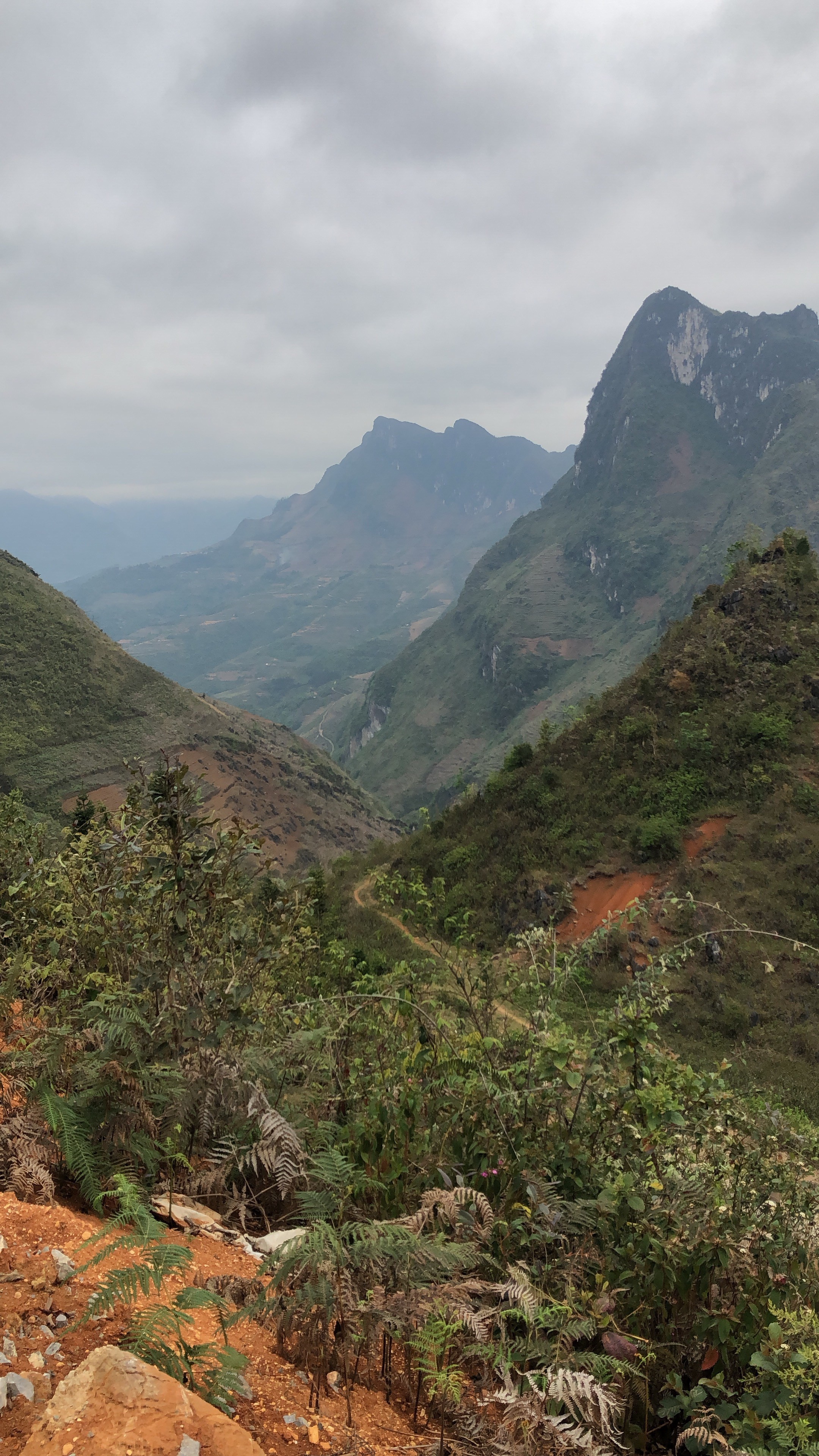 A scenic view of Ha Giang's winding roads and mountainous landscapes, emphasizing the need for reliable transportation
A scenic view of Ha Giang's winding roads and mountainous landscapes, emphasizing the need for reliable transportation
4. Top Attractions Near the Border: Must-See Destinations
Ha Giang’s border region is brimming with stunning attractions and cultural sites. Here are some must-see destinations to include in your itinerary.
4.1. Dong Van Karst Plateau Geopark
A UNESCO World Heritage site, the Dong Van Karst Plateau Geopark is the main draw for visitors to Ha Giang:
- Ma Pi Leng Pass: Often called the “King” of Vietnamese passes, offering breathtaking views of the Nho Que River and surrounding mountains.
- Lung Cu Flag Tower: The northernmost point of Vietnam, marked by a towering flag tower offering panoramic views.
- Dong Van Ancient Town: A charming town with traditional architecture, narrow streets, and a bustling market.
4.2. Lung Cu Flag Tower
Symbolizing Vietnam’s northernmost point, the Lung Cu Flag Tower is a significant landmark:
- Historical Significance: Learn about the tower’s history and its importance to the Vietnamese people.
- Panoramic Views: Climb to the top for unparalleled views of the surrounding landscapes and border region.
- Cultural Experience: Interact with local ethnic groups who reside in the area.
4.3. Dong Van Ancient Town
Step back in time in Dong Van Ancient Town, a preserved area with traditional architecture:
- Old Quarter: Wander through the narrow streets lined with centuries-old houses.
- Dong Van Market: Visit the local market to experience the vibrant culture and trade.
- Cultural Immersion: Enjoy traditional food and interact with the local community.
4.4. Meo Vac Town
Explore Meo Vac, a remote town known for its stunning landscapes and unique markets:
- Meo Vac Market: A colorful market held every Sunday, attracting ethnic groups from surrounding villages.
- Khau Vai Love Market: An annual event where ethnic minority people come to find love and reconnect with old flames.
- Mountain Views: Enjoy the scenic beauty of the surrounding mountains and valleys.
4.5. Hoang Su Phi Terraced Rice Fields
Witness the breathtaking beauty of Hoang Su Phi’s terraced rice fields:
- Best Viewing Time: Visit during the planting season (May-June) or harvest season (September-October) for the most spectacular views.
- Hiking Trails: Explore the fields on foot via various hiking trails.
- Photography: Capture stunning photos of the cascading rice terraces.
4.6. Quan Ba Heaven’s Gate
Visit Quan Ba Heaven’s Gate for panoramic views and geological wonders:
- Twin Mountains: Admire the iconic Twin Mountains (Fairy Bosom) rising from the valley.
- Viewpoint: Enjoy breathtaking views of the surrounding landscapes.
- Local Culture: Visit nearby villages to experience the local way of life.
4.7. Yen Minh Pine Forest
Experience the tranquility of Yen Minh Pine Forest:
- Scenic Drives: Enjoy a relaxing drive through the pine forest.
- Picnic Spots: Find a peaceful spot for a picnic amidst the trees.
- Nature Walks: Take a leisurely walk and enjoy the fresh air.
4.8. Pao’s House
Visit Pao’s House, a traditional Hmong house that served as a filming location for a famous Vietnamese movie:
- Cultural Insight: Learn about Hmong architecture and lifestyle.
- Movie History: Discover the history of the house and its role in the film.
- Local Interaction: Interact with the family who owns the house and learn about their traditions.
SIXT.VN offers curated tours that include these top attractions, providing you with knowledgeable guides and seamless transportation to make the most of your visit to Ha Giang’s border region.
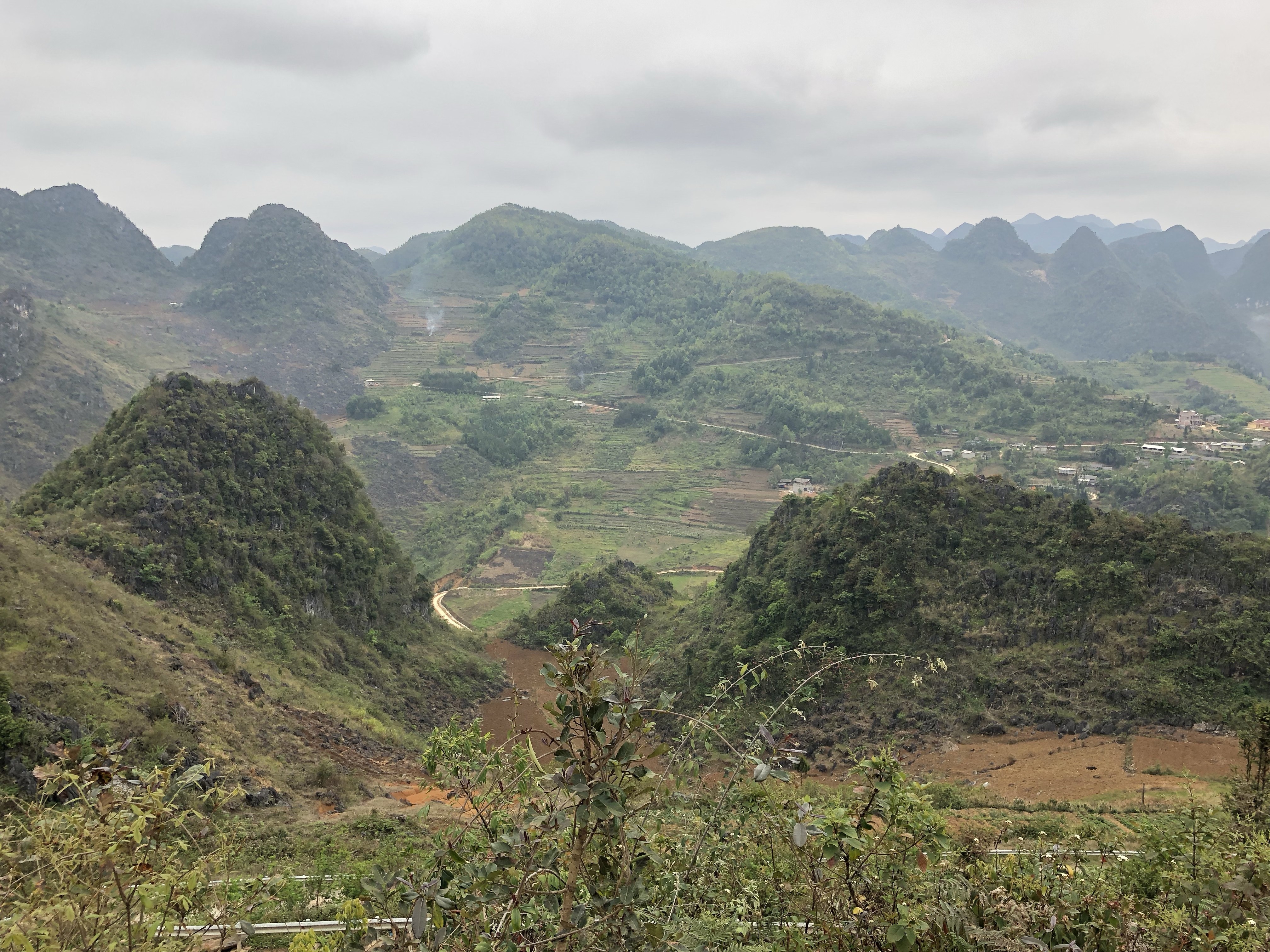 Panoramic view of the Dong Van Karst Plateau Geopark, a UNESCO World Heritage Site near the Chinese border
Panoramic view of the Dong Van Karst Plateau Geopark, a UNESCO World Heritage Site near the Chinese border
5. Cultural Experiences: Immersing Yourself in Ha Giang’s Local Life
Immersing yourself in the local culture is a highlight of any trip to Ha Giang. Here are some ways to experience the rich cultural life of this region.
5.1. Homestay Experiences
Staying in a homestay offers an authentic glimpse into the daily life of local families:
- Local Cuisine: Enjoy home-cooked meals featuring traditional dishes.
- Family Interaction: Participate in daily activities and learn about local customs.
- Cultural Exchange: Share stories and experiences with your hosts.
SIXT.VN partners with trusted homestays to ensure a comfortable and enriching experience.
5.2. Participating in Local Festivals
Ha Giang is known for its vibrant festivals, each offering a unique cultural experience:
- Gau Tao Festival (Hmong): A spring festival celebrating fertility and prosperity.
- Long Tong Festival (Tay): A field praying festival for a bountiful harvest.
- Khau Vai Love Market: An annual event where ethnic minority people come to find love.
Check the festival calendar and plan your trip to coincide with these cultural events.
5.3. Visiting Local Markets
Local markets are the heart of community life, offering a vibrant mix of goods and cultural interactions:
- Dong Van Market: A bustling market where you can find traditional textiles, handicrafts, and local produce.
- Meo Vac Market: A Sunday market attracting ethnic groups from surrounding villages.
- Shopping Tips: Bargain respectfully and support local artisans.
5.4. Learning Traditional Crafts
Participate in workshops to learn about traditional crafts:
- Textile Weaving: Learn about the intricate process of weaving traditional textiles.
- Silver Jewelry Making: Discover the art of crafting silver jewelry.
- Basket Weaving: Try your hand at weaving baskets from local materials.
5.5. Trying Local Cuisine
Ha Giang’s cuisine is a blend of unique flavors and local ingredients:
- Thang Co: A traditional horse meat soup.
- Men Men: Steamed corn flour.
- Au Tau Porridge: A nutritious porridge made with local herbs.
Be adventurous and try these local delicacies for an authentic culinary experience.
5.6. Interacting with Ethnic Minority Groups
Ha Giang is home to numerous ethnic minority groups, each with its own distinct culture:
- Hmong: Known for their vibrant clothing and intricate silver jewelry.
- Tay: Known for their traditional stilt houses and agricultural practices.
- Dao: Famous for their distinctive red headscarves and herbal medicine knowledge.
Be respectful and engage in meaningful interactions with these communities.
5.7. Understanding Local Customs and Etiquette
Respect local customs and etiquette to ensure a positive experience:
- Dress Modestly: Especially when visiting religious sites.
- Ask Permission: Before taking photos of people.
- Learn Basic Phrases: Knowing a few words in Vietnamese can enhance your interactions with locals.
SIXT.VN provides cultural sensitivity training for guides and ensures that tours are conducted responsibly and respectfully.
By immersing yourself in these cultural experiences, you’ll gain a deeper appreciation for the rich heritage and unique way of life in Ha Giang. SIXT.VN is committed to providing you with authentic and responsible travel experiences that connect you with the local culture.
 Traditional Hmong women in colorful attire at a local market, showcasing the rich cultural diversity of Ha Giang
Traditional Hmong women in colorful attire at a local market, showcasing the rich cultural diversity of Ha Giang
6. Adventure Activities: Exploring Ha Giang’s Rugged Terrain
Ha Giang’s rugged terrain offers a plethora of adventure activities for thrill-seekers and nature enthusiasts. Here are some exciting ways to explore the province.
6.1. Motorbiking the Ha Giang Loop
The Ha Giang Loop is a legendary motorbike route known for its stunning scenery and challenging roads:
- Route Highlights: Ma Pi Leng Pass, Dong Van Karst Plateau, and Quan Ba Heaven’s Gate.
- Safety Tips: Ensure you have a valid license, wear appropriate gear, and ride defensively.
- Rental Options: SIXT.VN offers reliable motorbike rentals and guided tours for a safe and enjoyable experience.
6.2. Trekking and Hiking
Explore Ha Giang’s mountains and valleys on foot with various trekking and hiking options:
- Hoang Su Phi Rice Terraces: Hike through the cascading rice terraces for breathtaking views.
- Dong Van Karst Plateau: Trek to remote villages and viewpoints on the plateau.
- Guided Tours: Hire a local guide for a more informative and safe experience.
6.3. Rock Climbing and Abseiling
For experienced climbers, Ha Giang offers opportunities for rock climbing and abseiling:
- Locations: Find suitable cliffs and rock faces in the Dong Van Karst Plateau.
- Safety Precautions: Ensure you have the necessary equipment and expertise.
- Local Guides: Hire a local guide familiar with the terrain and climbing routes.
6.4. Caving
Discover Ha Giang’s underground wonders with caving expeditions:
- Locations: Explore caves in the Dong Van Karst Plateau.
- Equipment: Bring appropriate lighting and safety gear.
- Local Guides: Hire a local guide familiar with the caves and their history.
6.5. Kayaking and Rafting
Enjoy the scenic rivers of Ha Giang with kayaking and rafting:
- Nho Que River: Kayak or raft through the stunning Nho Que River.
- Safety Precautions: Wear a life jacket and be aware of river conditions.
- Rental Options: Find kayak and raft rentals in Dong Van and Meo Vac.
6.6. Cycling
Explore Ha Giang at a slower pace with cycling tours:
- Routes: Cycle along scenic roads and trails.
- Rental Options: Rent a bicycle in Ha Giang City or Dong Van.
- Guided Tours: Join a guided cycling tour for a more organized experience.
6.7. Camping
Experience the wilderness of Ha Giang with camping:
- Locations: Find suitable camping spots in remote areas.
- Equipment: Bring your own camping gear.
- Safety Precautions: Be aware of weather conditions and wildlife.
SIXT.VN can help you plan and organize these adventure activities, providing you with reliable equipment, experienced guides, and essential safety information.
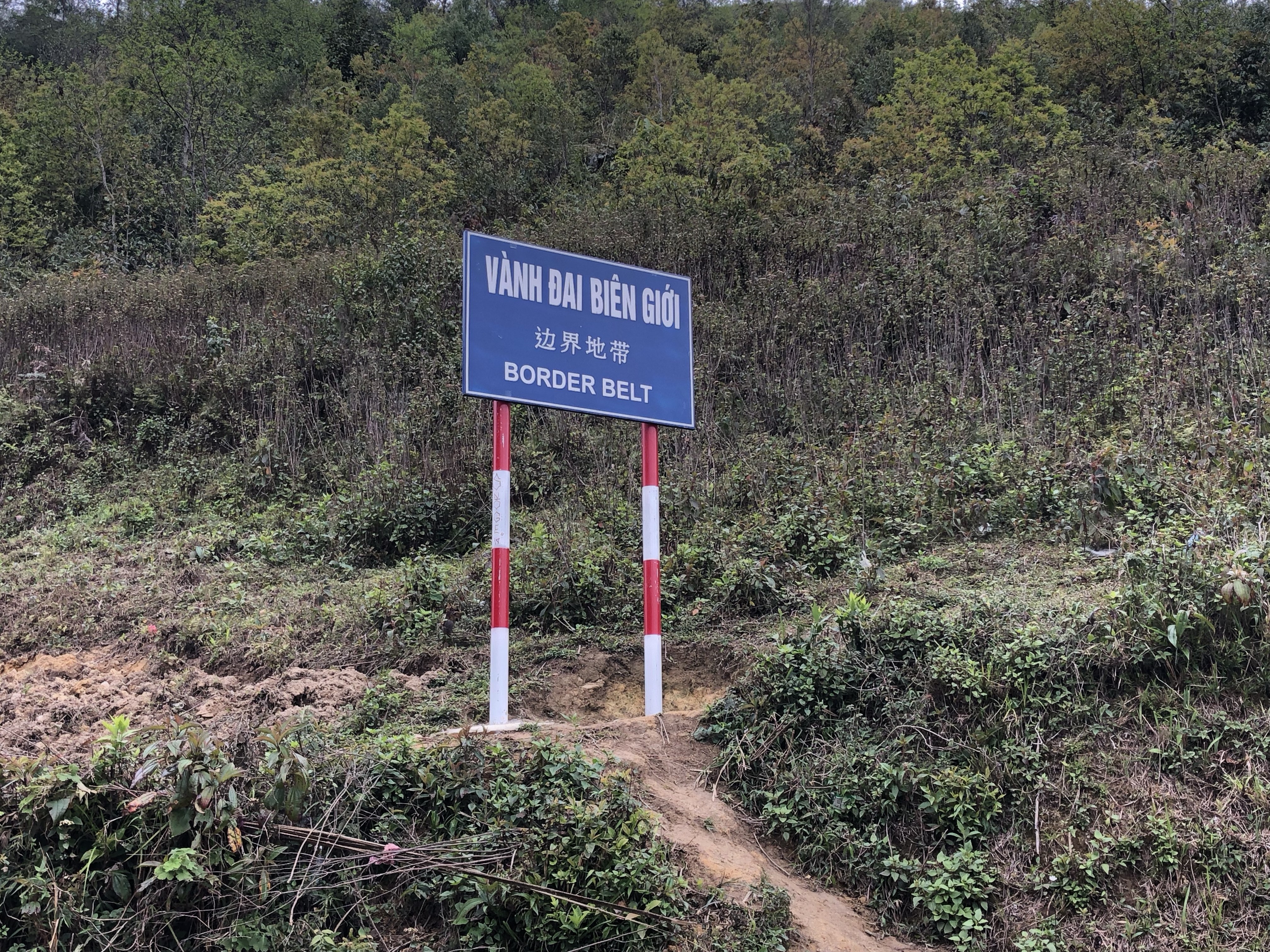 A motorbike rider navigating the winding roads of the Ha Giang Loop, highlighting the adventurous spirit of the region
A motorbike rider navigating the winding roads of the Ha Giang Loop, highlighting the adventurous spirit of the region
7. Sustainable Tourism: Traveling Responsibly in Ha Giang
Sustainable tourism is crucial to preserving Ha Giang’s natural beauty and cultural heritage. Here’s how you can travel responsibly in the region.
7.1. Supporting Local Businesses
Support local businesses to boost the local economy:
- Homestays: Stay in locally-owned homestays.
- Restaurants: Eat at local restaurants.
- Shops: Buy souvenirs from local shops and markets.
7.2. Respecting Local Culture
Respect local customs and traditions:
- Dress Modestly: Especially when visiting religious sites.
- Ask Permission: Before taking photos of people.
- Learn Basic Phrases: Knowing a few words in Vietnamese can enhance your interactions with locals.
7.3. Minimizing Environmental Impact
Reduce your environmental footprint:
- Reduce Waste: Avoid single-use plastics and bring your own reusable water bottle.
- Conserve Resources: Save water and electricity.
- Dispose of Waste Properly: Dispose of trash in designated bins.
7.4. Ethical Wildlife Interactions
Avoid activities that harm animals:
- Do Not Participate in Animal Exploitation: Avoid riding elephants or visiting animal shows.
- Observe Wildlife from a Distance: Respect wildlife and their habitats.
7.5. Supporting Conservation Efforts
Support conservation efforts:
- Donate to Local Organizations: Donate to organizations working to protect Ha Giang’s environment.
- Participate in Conservation Activities: Join conservation activities such as tree planting.
7.6. Educating Yourself and Others
Learn about sustainable tourism and share your knowledge:
- Read About Sustainable Tourism: Educate yourself about sustainable tourism practices.
- Share Your Knowledge: Share your knowledge with others.
7.7. Choosing Responsible Tour Operators
Choose tour operators committed to sustainable tourism:
- Sustainable Practices: Look for tour operators with sustainable practices.
- Local Guides: Choose tour operators that employ local guides.
- Community Benefits: Choose tour operators that benefit the local community.
SIXT.VN is committed to sustainable tourism practices and partners with local communities to ensure that tourism benefits everyone.
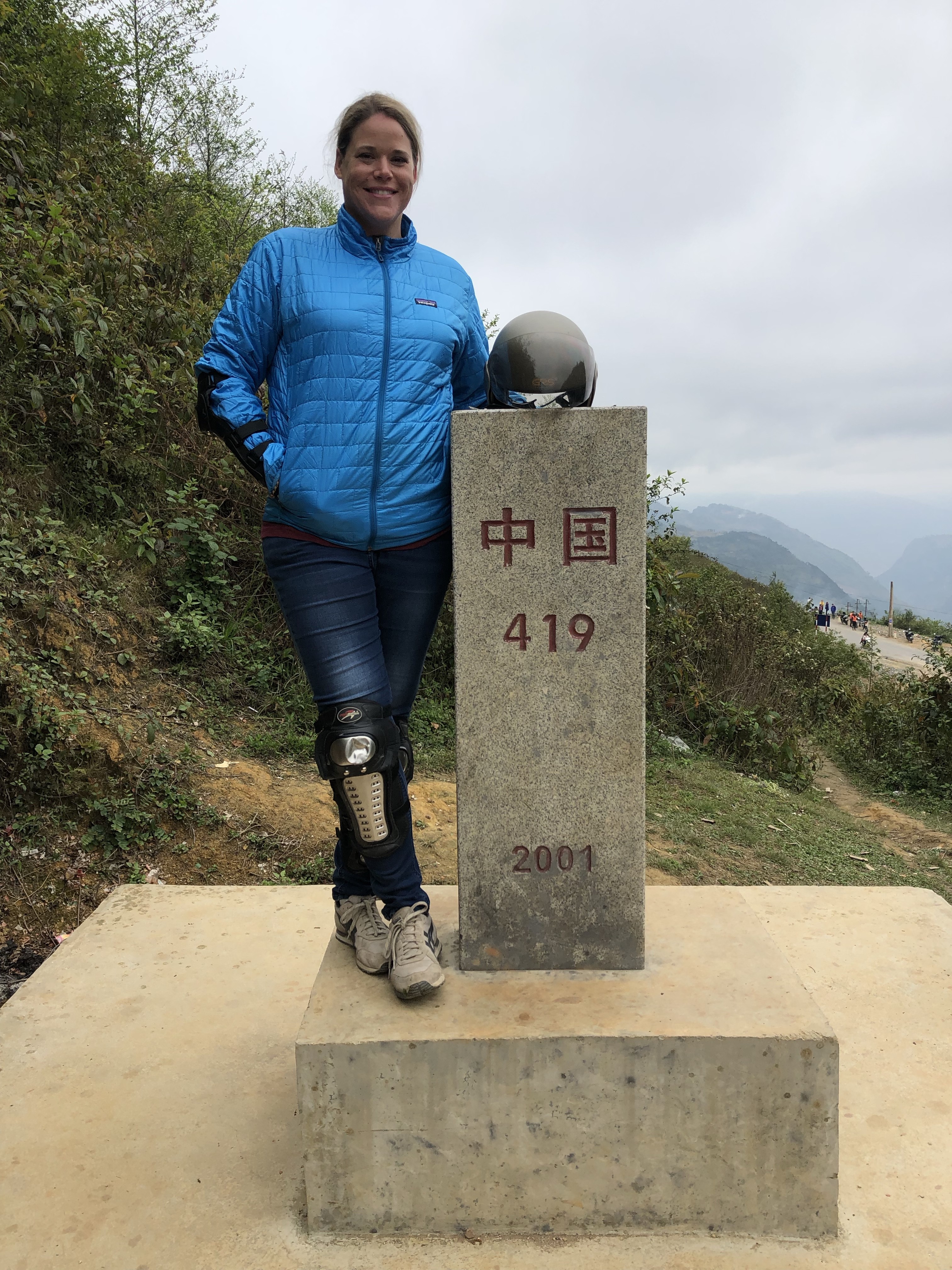 A local artisan weaving traditional textiles, emphasizing the importance of supporting local businesses
A local artisan weaving traditional textiles, emphasizing the importance of supporting local businesses
8. Getting to Ha Giang: Transportation Options from Hanoi
Planning your journey to Ha Giang from Hanoi requires careful consideration of transportation options. Here’s a comprehensive guide to help you choose the best way to travel.
8.1. By Bus
Taking a bus from Hanoi to Ha Giang is a popular and economical option:
- Departure Points: Buses depart from My Dinh Bus Station in Hanoi.
- Duration: The journey takes approximately 6-8 hours.
- Types of Buses: Options include sleeper buses and standard seating buses.
- Booking: Book tickets in advance, especially during peak season.
8.2. By Sleeper Train and Bus
Combining a sleeper train and bus offers a comfortable way to travel:
- Train to Lao Cai: Take a sleeper train from Hanoi to Lao Cai.
- Bus to Ha Giang: From Lao Cai, take a bus to Ha Giang.
- Duration: The train journey takes around 8 hours, followed by a 5-hour bus ride.
- Booking: Book train and bus tickets in advance.
8.3. By Private Car or Taxi
Hiring a private car or taxi provides a more convenient and personalized travel experience:
- Door-to-Door Service: Enjoy direct transportation from your hotel in Hanoi to your destination in Ha Giang.
- Comfort and Flexibility: Travel in comfort and have the flexibility to stop along the way.
- Duration: The journey takes approximately 5-6 hours.
SIXT.VN offers reliable private car services with experienced drivers for a seamless transfer.
8.4. By Motorbike
Motorbiking from Hanoi to Ha Giang is an adventurous option for experienced riders:
- Route: Choose a scenic route through the mountains.
- Duration: The journey takes at least 2 days.
- Safety: Ensure you have a valid license, wear appropriate gear, and plan your route carefully.
8.5. By Shuttle Bus
Shuttle buses offer a comfortable and convenient way to travel:
- Pick-Up Points: Shuttle buses pick up passengers from various locations in Hanoi.
- Duration: The journey takes approximately 6-7 hours.
- Comfort: Enjoy comfortable seating and air conditioning.
8.6. Booking Tips
Here are some tips for booking your transportation:
- Book in Advance: Book tickets in advance, especially during peak season.
- Compare Prices: Compare prices from different transportation providers.
- Read Reviews: Read reviews before booking.
- Check Schedules: Check the latest schedules and departure times.
SIXT.VN can help you book transportation from Hanoi to Ha Giang, ensuring a smooth and hassle-free journey.
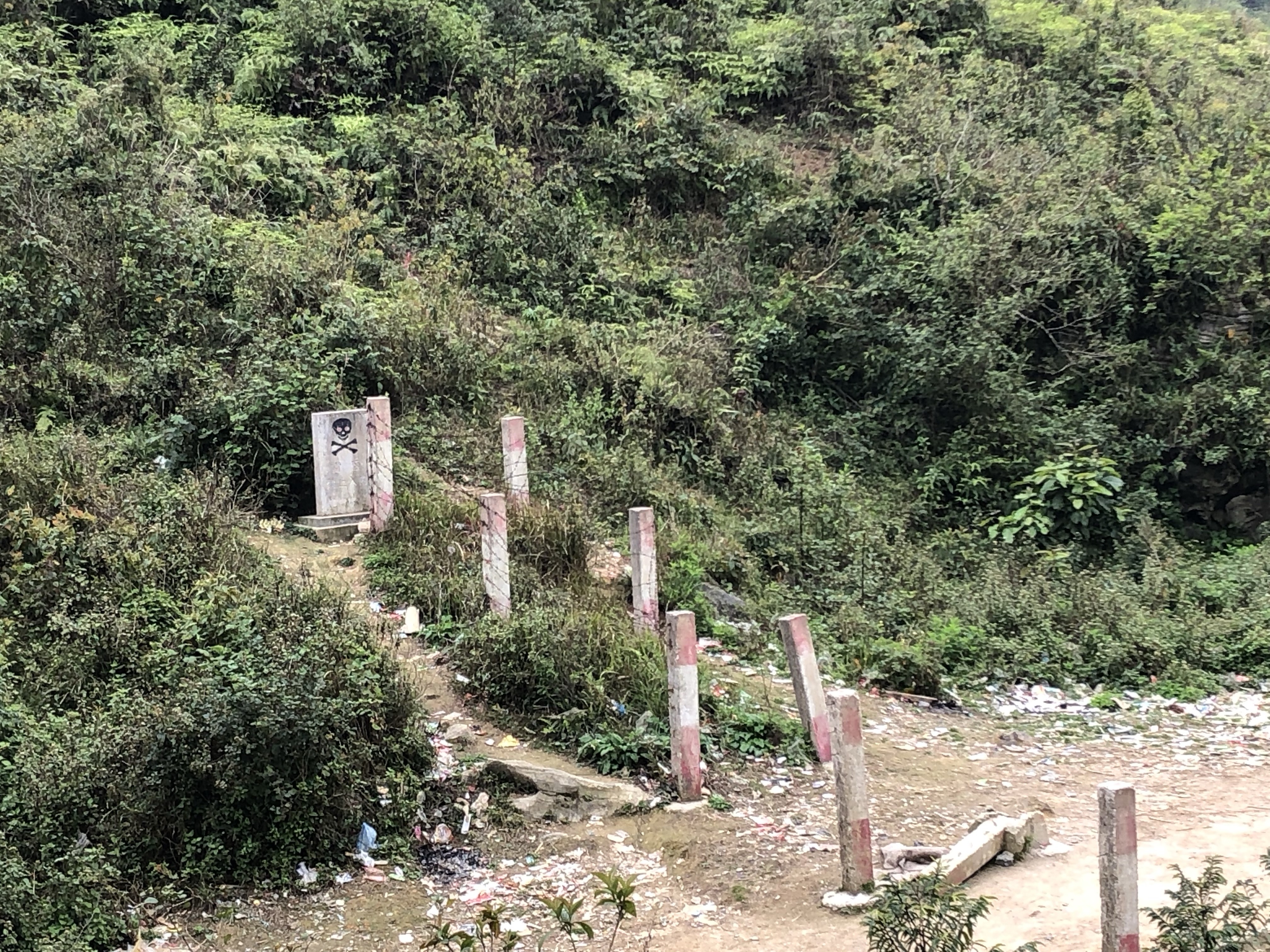 A sleeper bus traveling from Hanoi to Ha Giang, providing a comfortable and economical transportation option
A sleeper bus traveling from Hanoi to Ha Giang, providing a comfortable and economical transportation option
9. Accommodation Options in Ha Giang: Where to Stay
Finding the right accommodation is essential for a comfortable and enjoyable trip to Ha Giang. Here’s a guide to the various options available.
9.1. Homestays
Staying in a homestay offers an authentic cultural experience:
- Local Interaction: Interact with local families and learn about their way of life.
- Traditional Food: Enjoy home-cooked meals featuring local cuisine.
- Affordable: Homestays are generally more affordable than hotels.
9.2. Guesthouses
Guesthouses offer a balance of comfort and affordability:
- Private Rooms: Enjoy private rooms with basic amenities.
- Convenient Locations: Guesthouses are often located in convenient locations.
- Good Value: Guesthouses provide good value for money.
9.3. Hotels
Hotels offer modern amenities and a higher level of comfort:
- Modern Facilities: Enjoy modern facilities such as air conditioning, Wi-Fi, and private bathrooms.
- Convenient Services: Hotels often offer convenient services such as laundry and room service.
- Higher Price Range: Hotels are generally more expensive than homestays and guesthouses.
9.4. Hostels
Hostels are a budget-friendly option for solo travelers:
- Dorm Rooms: Stay in dormitory-style rooms.
- Social Atmosphere: Enjoy a social atmosphere and meet other travelers.
- Low Cost: Hostels are the most affordable accommodation option.
9.5. Eco-Lodges
Eco-lodges offer sustainable accommodation in natural settings:
- Sustainable Practices: Support eco-friendly practices.
- Natural Setting: Enjoy accommodation in a natural setting.
- Unique Experience: Have a unique and memorable experience.
9.6. Booking Tips
Here are some tips for booking your accommodation:
- Book in Advance: Book in advance, especially during peak season.
- Read Reviews: Read reviews before booking.
- Consider Location: Consider the location of your accommodation.
- Check Amenities: Check the amenities offered.
SIXT.VN can help you book accommodation in Ha Giang, ensuring a comfortable and convenient stay.
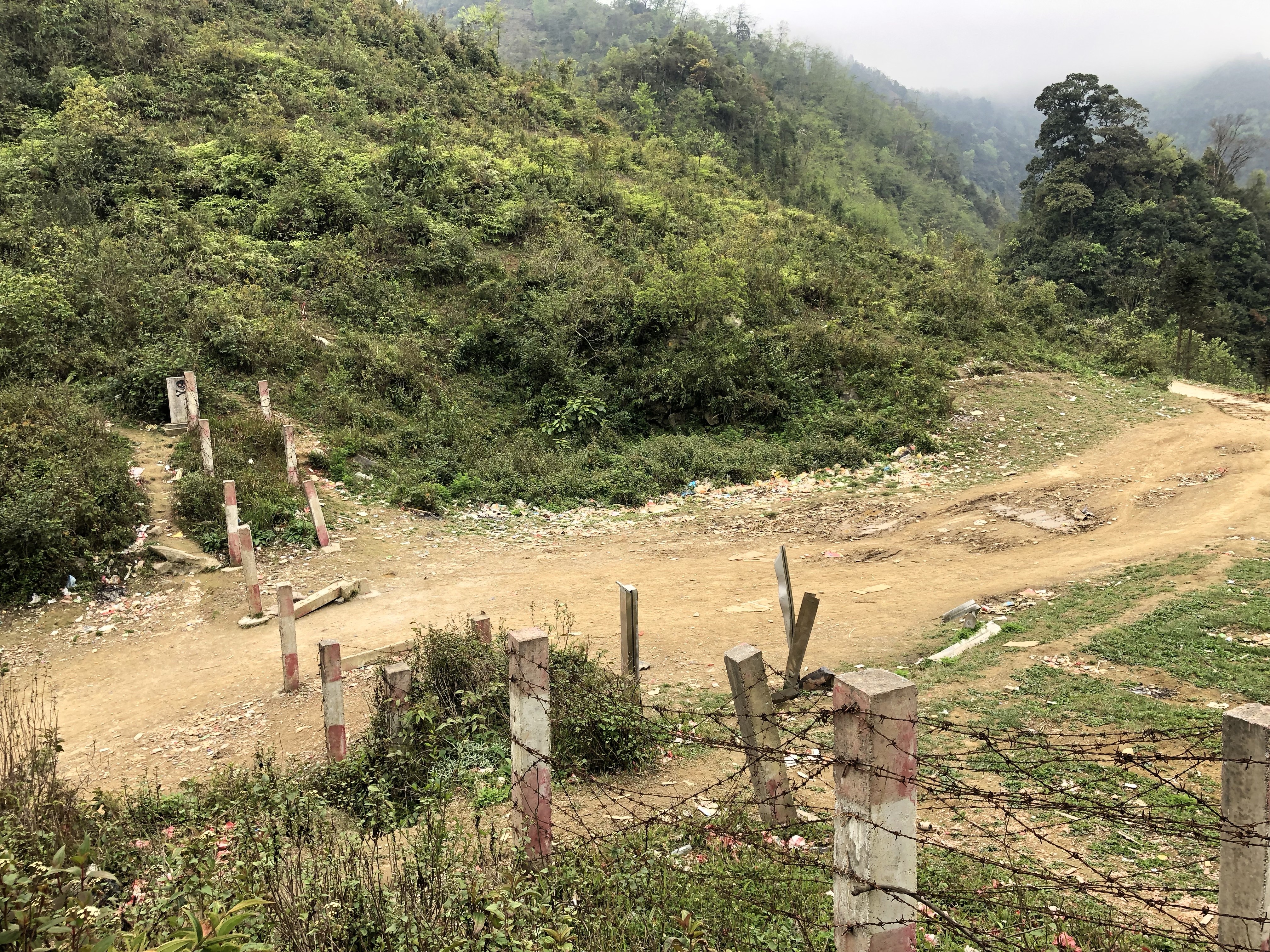 A traditional homestay in Ha Giang, offering an authentic cultural experience and a glimpse into local life
A traditional homestay in Ha Giang, offering an authentic cultural experience and a glimpse into local life
10. Frequently Asked Questions (FAQs) About Ha Giang and its Border with China
Here are some frequently asked questions about Ha Giang and its border with China to help you plan your trip.
10.1. Which Country Does Ha Giang Border?
Ha Giang province in Vietnam borders China.
10.2. How Long is the Border Between Ha Giang and China?
The border between Ha Giang and China is approximately 270 kilometers (168 miles) long.
10.3. Can I Cross the Border from Ha Giang into China?
Yes, you can cross the border through the Thanh Thuy International Border Gate, but you need the necessary permits and documentation.
10.4. What are the Main Border Crossings in Ha Giang?
The main border crossing is the Thanh Thuy International Border Gate.
10.5. Is it Safe to Travel Near the Border in Ha Giang?
Yes, it is generally safe, but it’s essential to follow local regulations and be aware of your surroundings.
10.6. What Ethnic Groups Live Near the Border?
Several ethnic minority groups live near the border, including the Hmong, Tay, Dao, and Lo Lo.
10.7. What are the Best Attractions Near the Border?
Top attractions include the Dong Van Karst Plateau Geopark, Lung Cu Flag Tower, and Dong Van Ancient Town.
10.8. Do I Need a Special Permit to Visit the Border Area?
Yes, certain areas may require special permits, especially if you plan to cross the border.
10.9. What Should I Pack When Visiting the Border Region?
Pack warm clothes, sturdy hiking shoes, rain gear, and personal items.
10.10. How Can SIXT.VN Help Me Plan My Trip to Ha Giang?
SIXT.VN offers transportation, accommodation, tours, and expert advice to help you plan a seamless and unforgettable trip to Ha Giang.
Ready to explore the captivating landscapes and cultural richness of Ha Giang? Let SIXT.VN take care of all your travel needs. From airport transfers to curated tours, we ensure your adventure in Vietnam is unforgettable.
Contact us today to book your trip and discover the beauty of Ha Giang!
Address: 260 Cau Giay, Hanoi, Vietnam
Hotline/Whatsapp: +84 986 244 358
Website: SIXT.VN



